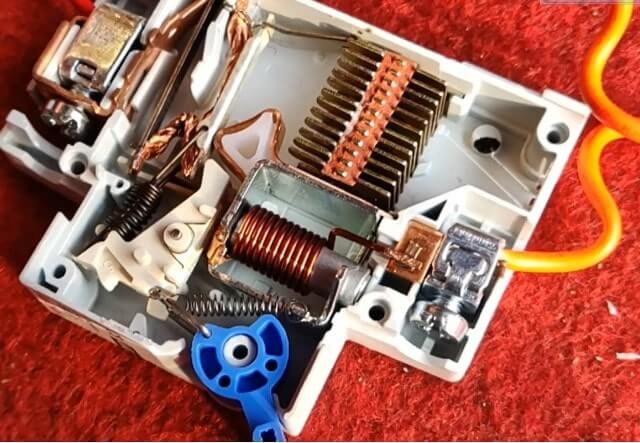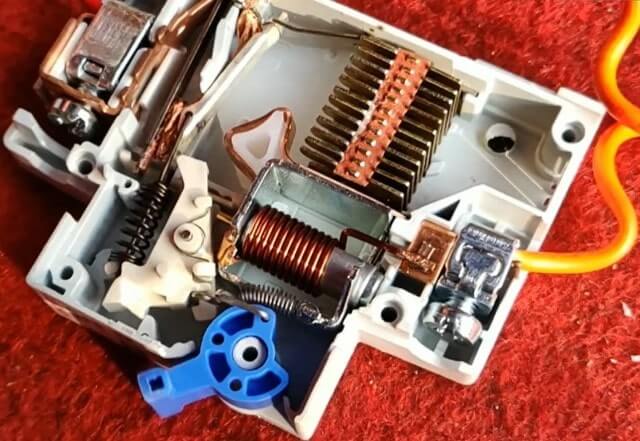The circuit breaker essentially consists of fixed and moving contacts called electrodes. Under the normal operating condition, these contacts remain closed, but the contacts are open when any fault occurs. Actually, when a fault occurs on any part of the system the circuit breaker’s trip coil gets energized and the moving contacts in the circuit breaker are pulled apart by some mechanisms, thus the circuits open.
In the simplest form, the circuit breaker monitors the electrical current, When the electrical current exceeds its safe limit due to overload or short circuit condition it automatically opens the circuit and stops the flow of current, and saves the equipment’s from damage.
Whenever any fault occurs on any part of the system the electromagnetic coil or trip coil gets energized and the contacts are apart from each other and the circuit is opened.
When the contacts of the circuit breakers are separated under faulty or short circuit conditions the arc is produced between them. The production of arc delays the current interruption process and it also generates heat which may cause damage to the system or to the circuit breaker itself.
So, there is a main problem in the circuit breaker is extinguish the arc within a short time period so that heat generated may not damage the circuit breaker and the circuit.
Let us take an example:
Example:
Most of the electrical circuits in your either 15 amp or 20 amp or higher amp ratings.
Let us assume a 15-amp circuit in your home i.e.,
15*120=1800 watt.
At a time if you use a hairdryer i.e., 1200 watts, and a microwave i.e., 1000 watts
1200/120=10 amp
And a microwave i.e., 1000 watt
i.e., 1000/120= 8.3 amp
Total 18.3 amp pulled through the 15-amp circuit. The circuit breaker tolerates this for a while and after some time the circuit breaker tripped and it stop the flow of current.
Table of Contents
In a normal conditions circuit breaker looks:

Under faulty condition circuit breaker looks:

Circuit breaker components:
There are most 5 common components of the circuit breakers are:
- Frame:
- Frame protects internal parts like, moving contact, arc runner, trip coil, operating lever etc of the circuit breaker.
- Operating mechanism:
- It opens and closed the circuit breaker.
- Contacts:
- It allows current to flow through the circuit under normal condition or when breaker is closed.
- Arc extinguisher:
- When circuit breaker contacts are separated under faulty condition or short circuit condition the arc is produced between them. Arc extinguisher is used to extinguish the arc.
- Trip unit:
- Open the operating mechanism in the event of overload or short circuit condition.
Arc extinguish methods:
- Arc chute
- Vacuum interrupter
- Sf6
- Minimum oil
- Magnetic coil
- Puffer etc.
Related Topics:
